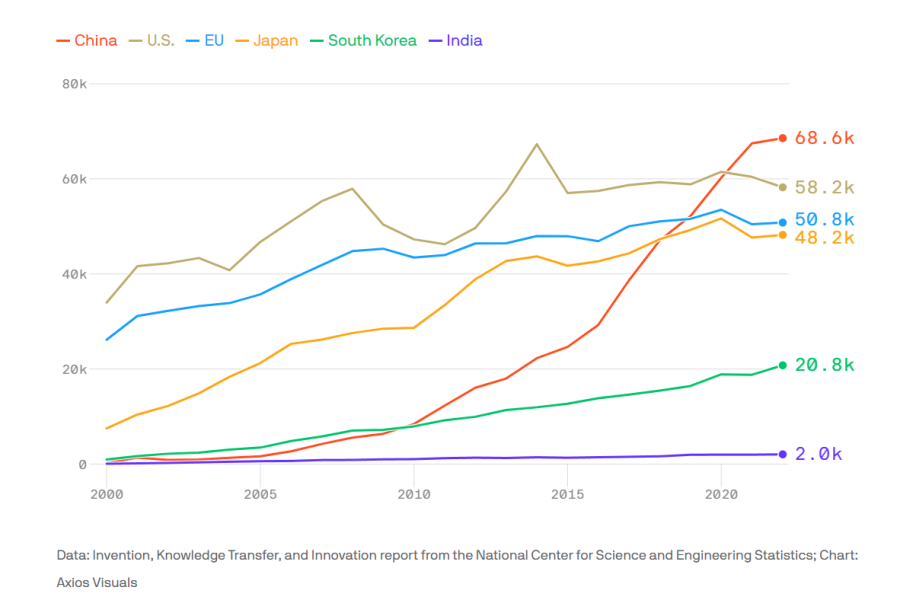In a landmark shift that underscores the rapidly evolving landscape of global innovation, China has for the first time significantly outpaced the United States in the number of international patent filings, according to a recent report from the US National Center for Science and Engineering Statistics (NCSES) at the National Science Foundation.
The data reveals a compelling narrative of ascendancy: Chinese innovators lodged approximately 68,600 patent applications in 2022 through the Patent Cooperation Treaty (PCT), surpassing their American counterparts who filed 58,200 applications in the same timeframe. This development not only highlights China’s burgeoning role on the world stage of technological advancement but also marks a pivotal moment in the global balance of intellectual property creation.

Particularly noteworthy is the explosive growth in the field of artificial intelligence (AI) among Chinese innovators, who have increased their global utility patent holdings from a mere 650 in 2012 to over 40,000 by 2022. In comparison, the United States also saw growth in this sector, albeit at a more modest scale, with the number of patents rising from about 920 to 9,400 during the same period.
Robert Atkinson, president of the Information Technology and Innovation Foundation (ITIF), remarked on the unprecedented nature of China’s patent growth, both in rate and scale, stating, “We have never seen a country achieve patenting growth like China has.”
This turn of events is a stark reversal from just a few years ago. In 2015, the United States had twice as many patents filed as China. By 2020, China had caught up, reaching parity with what had been the world’s leading source of technological patents. This recent surge by China not only signifies its ascension as a global innovation powerhouse but also poses new challenges and opportunities for international technology and intellectual property policies.
